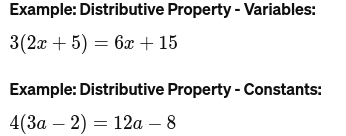Algebraic Expression Multiplication: A Comprehensive Tutorial
Algebra, often perceived as a mathematical puzzle, unveils its depth and intricacy when it comes to multiplying algebraic expressions. In this tutorial, we embark on a journey through the fundamental principles and techniques that govern the multiplication of algebraic expressions, unlocking the door to advanced mathematical reasoning.
Understanding Algebraic Expressions: A Recap
Before delving into multiplication, let’s briefly recap what algebraic expressions are. An algebraic expression is a mathematical phrase involving numbers, variables, and operations. Variables, often denoted by letters like x, y, or z, represent unknown or changing quantities, while constants are fixed numerical values. These expressions can be combined, manipulated, and, crucially, multiplied to explore relationships and solve problems.
Table of Contents
**1. Multiplication Basics: The Foundation
Like Terms in Multiplication:
The key to mastering multiplication lies in recognizing like terms. Like terms have the same variable and exponent. When multiplying expressions, focus on combining these similar components.
Example: Multiplying Like Terms – Variables:
2x . 3x = 6x2
Example: Multiplying Like Terms – Constants:
4a . 2a = 8a2
2. Distributive Property: A Powerful Tool
Expanding Expressions:
The distributive property becomes invaluable when multiplying expressions. It allows us to distribute a value to all terms within parentheses.

3. Multiplying Binomials: The FOIL Method
FOIL Method Defined:
Multiplying binomials (expressions with two terms) involves the FOIL method, which stands for First, Outer, Inner, Last. It’s a systematic approach to ensure all terms are multiplied.
Example: FOIL Method – Binomials:
![]()
4. Multiplying Polynomials: A Gradual Expansion
Polynomials Defined:
Polynomials, expressions with multiple terms, require a gradual approach. Multiply each term in one polynomial by each term in the other, combining like terms as needed.
Example: Multiplying Polynomials:
![]()
Solved Examples
Illustration 1: Multiply 6x with 10y and 15z
Solution: 6x × 10y × 15z = 60xy × 15z = 900xyz
We multiply the first two monomials and then the resulting monomial to the third monomial.
Illustration 2: Find the volume of a cuboid whose length is 4ax, breadth is 2by and height is 20cz.
Solution:
Volume = length × breadth × height
Therefore, volume = 4ax × 2by × 20cz = 4 × 2 × 20 × (ax) × (by) × (cz) = 160axbycz
Illustration 3: Multiply (3a2 + 6a + 5) by 4a.
Solution:
4a × (3a2 + 6a + 5)
= (4a × 3a2) + (4a × 6a) + (4a × 5)
= 12a3 + 24a2 + 20a